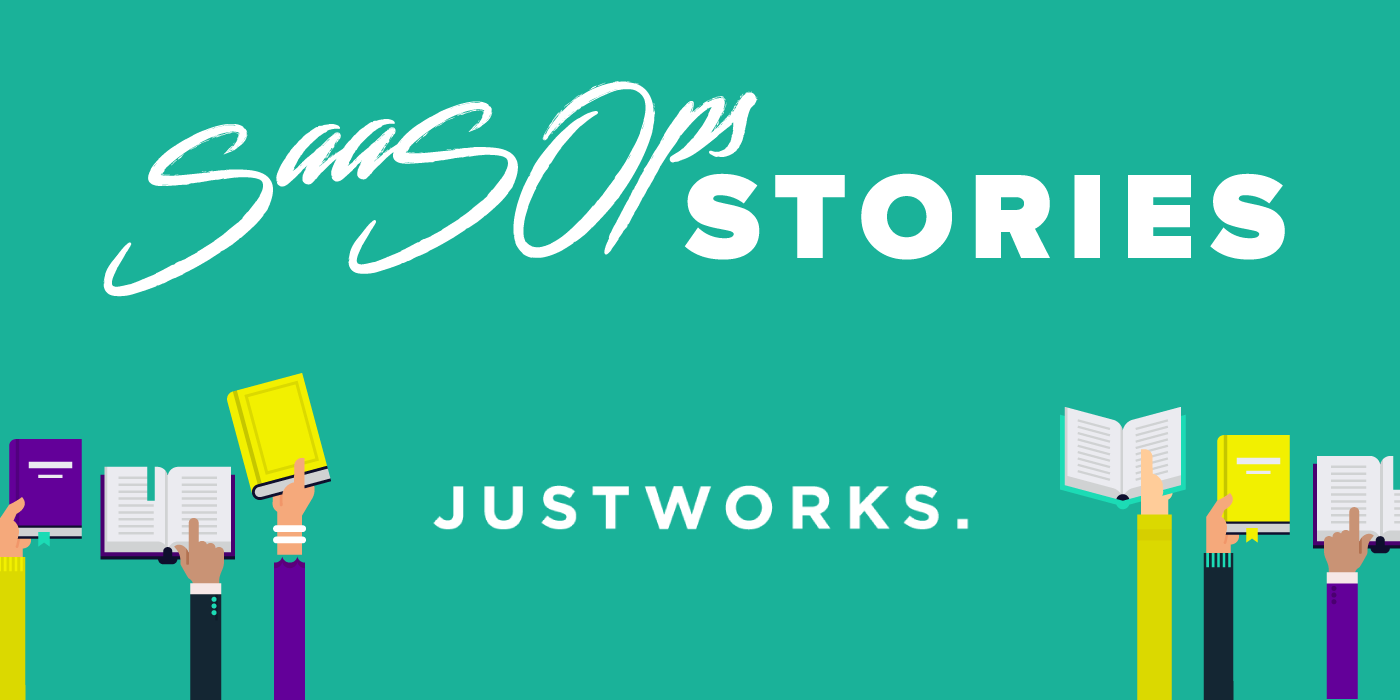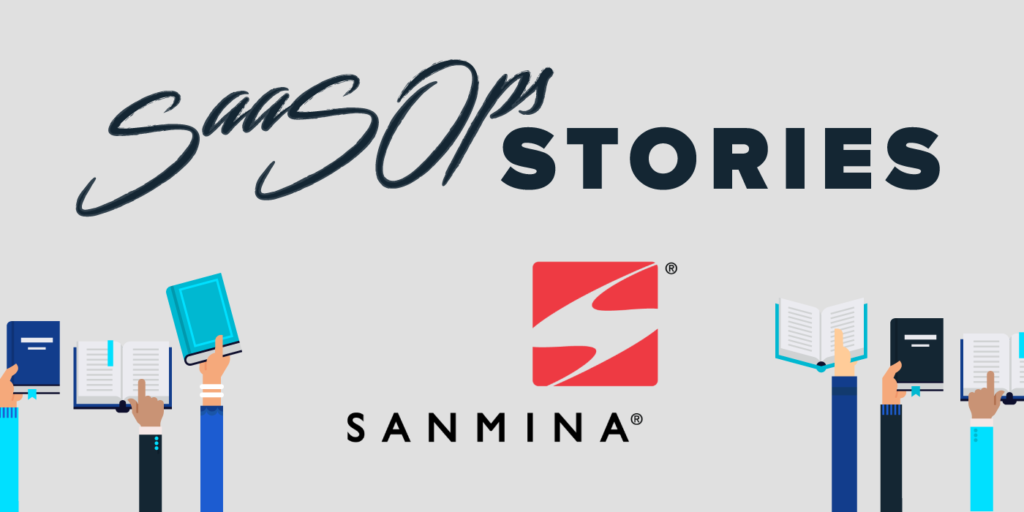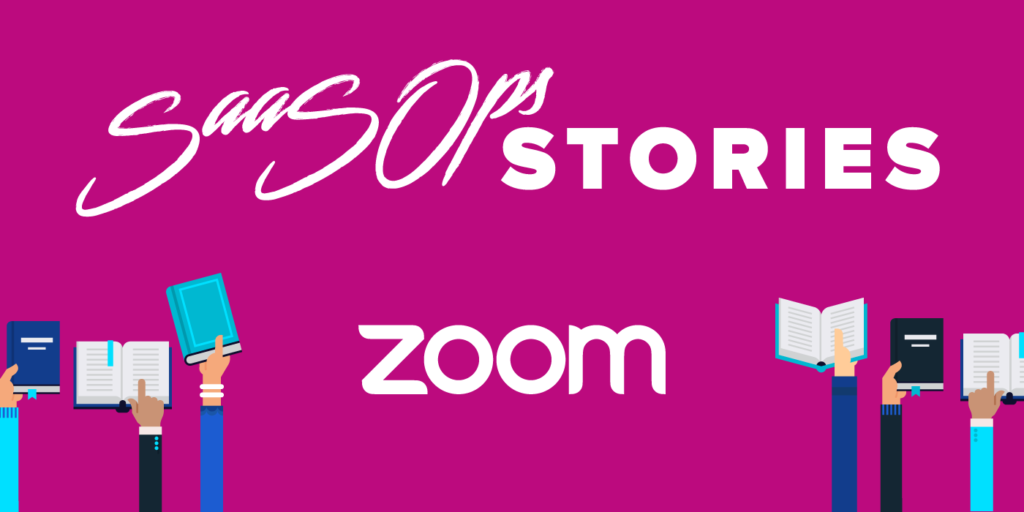SaaSOps Stories With Karel vanBeekom, IT Manager at Justworks
November 13, 2020
7 minute read

Justworks is one of the leading Professional Employer Organizations (PEO) in the industry, thanks to its simple platform and exceptional 24/7 customer service. Karel vanBeekom joined Justworks three years ago—and his role and responsibilities have evolved quite a bit in that time, especially during the COVID-19 pandemic.
As part of her ongoing interview series with IT leaders, our chief customer officer Rachel Orston sat down with vanBeekom to discuss his career, his approach to management, and how he has tackled the unique challenges of remote work.
Editor’s note: This interview has been edited lightly for clarity.
I’m interested to understand what drew you to Justworks. I’d also love to hear about your leadership journey leading up to this point.
I was recruited by their only and first IT engineer to join the company as its first IT manager, which was an interesting opportunity for me. I had been working for a software consultancy that was part of the EMC Dell family. The team that I was working with was about 30 people strong and was distributed across several countries. I piloted some processes and programs, but it was really difficult to build rapport with leadership outside of the New York office.
I was looking for a team that I could join that was local that wanted to work with IT as a business and a strategic partner. I felt it was a chance to enact the change I was looking for and partner with senior leaders closely. I look to help mission-driven companies that seek to do good in the world, or have a vision of change for the better, so the Justworks mission to empower small businesses and their employees felt like a great opportunity to learn and help contribute to things that really matter in the lives of everyday people. Benefits, payroll, amazing customer service interactions – it’s hard to say just how excited I was to craft an IT vision of the future for an organization poised to become a company for the ages.
And because so much of the program was going to be a greenfield, I thought that a really interesting way to bring things I was passionate about into the IT domain was to organize our work in a more agile way, using extreme programming practices and setting up balanced teams. Then, we’d do weekly sprints with IPMs and treat the IT team like a product development team.
When I arrived at Justworks, so much was still done manually. I brought in BetterCloud, and we were already using Jamf. In concert with a few other tools, we’ve reduced a significant amount of noise and can focus on things that are more impactful for the company and interesting for the IT engineers than the usual password resets or ‘“screw-turning.”
There are a lot of people out there in IT today who are looking to adopt those types of frameworks and principles. What would you say have been some of your biggest lessons learned that you’d share with others who are trying to get that done?
The cultural change challenge can be the hardest one, particularly if you are working with other stakeholders who aren’t as familiar with Agile methodologies. Maybe their engineering teams aren’t even working that way, and piloting Agile might be a huge cultural hurdle.
So if that’s the case, you want to find the agents of change within your organization, whether that’s an engineering leader, a head of security, or somebody else with whom you can build a relationship and present these concepts over time. In some cases, you might have to spend a lot of time putting a really effective deck together and then popularizing it so one of those people tells their peers, “Hey, this is worth doing.”
In the IT department, other strategic things come into play for me. We are a zero on-prem resource shop. I don’t want to host anything. Everything as much as possible is going to be a SaaS application that’s hosted by the vendor.
So when you couple those things together, I think you can craft a vision for a program that will speak to the people who probably aren’t technical, but care a lot about the other parts, like how much it will cost, how much more secure it is, and how it’s going to keep people from burning out.
In terms of thinking about connecting roles to business outcomes, how did that shape the type of people you brought into the organization? And how do you keep that kind of mindset going once you get someone into the organization?
I typically look for people who are self-driven learners. Typically, people will ask me questions during interviews about my vision and hope for the future. And I’ll tell them about how I’m taking on a lot of product management projects and that it influences my goals for the team. I’ll also tell them about the type of work they’ll be exposed to and opportunities to grow on the team, which helps me sift out who has a growth mindset and who’s just looking for a paycheck.
Now that everyone’s remote, how have you and the team adapted throughout the pandemic? Has this impacted any of your existing processes?
Fortunately, I was pushing the remote-first philosophy as my default pitch. The company has a strong preference for in-person collaboration, and I don’t want to run counter to the company’s overall vision, but I also want to make sure that there’s some way to respond if something pushes us more remote than we’d prefer.
I knew we were going to continue to grow as a company and that we were going to drive business across the country. I figured we would also employ people in different parts of the country at some point, so I wanted that infrastructure to be in place. When COVID came and we decided to go all remote, they told me on a Sunday and we went remote the following Tuesday. We gave everyone a day to come to the office to pick up their stuff, and then we were fully remote.
So the transition was relatively smooth and being a fully-SaaS environment with no on-prem infrastructure helps with that. Having tools already in place to make that a natural seamless event helps with that.
David’s talked about this in his Altitude keynote, but IT is really at the epicenter of every interaction. As you think about the role you’re playing now in this new remote work environment, what does innovation in that environment look like?
I think the things to look out for are people who are innovating in the field of data loss prevention and other high-level security paradigms. How can people communicate and send sensitive data safely and appropriately? And I think we’ll probably see technological developments in that area. Right now the big players in DLP, for example, are McAfee and Symantec, which are 20th-century companies who often think, “Let’s try to throw money at this problem.”
But for some of the people that I have relationships with, they are much more agile. And small shops can develop products or prototypes very quickly that represent completely different ways of thinking about communicating. I think that’s what’s going to be interesting to see develop over the next year or two.
Absolutely. And going back to your original goal of implementing this engineering mindset and agile framework, how is that also shaping what you feel like your organization should look like a year from now?
When it comes to the team, I’m having conversations around things like how much help desk stuff to automate and how much product management is part of our roles. That probably means I have to build more balanced teams. I have to have the ability to do more outreach within the company. And to do that, the next phase with my team is kind of learning how to think of things as a designer would.
Maybe I’ll look for people who have a design background and have an eye for that. Eventually, I’ll need to hire a product manager so I can do other things. So over the next year or two, I would say that’s the kind of talent I’m going to look for. Not only great engineers who understand modern IT technology, but also people who want to think in a balanced kind of way and can add value.
I love that. As someone that drives customer experience within BetterCloud, when you start talking about things like design thinking and others, you’re speaking my language. So what does the employee experience look like for you?
To your earlier point about technology being involved in every aspect of people’s lives now, there’s an opportunity for us in the IT team at Justworks to find out which teams we can form strong partnerships with. We recently found new ways to deepen our bond with the workplace team and decided how we want to approach working together in the future. We just opened a new office, so it’s a good opportunity for us to work on a project together that involves outreach and data collecting to figure out what people want and how to strive to make things continuously better.
I have this vision for a project of embedding liaisons or experts in each major division. So there would be someone in Customer Success who works on the IT team, but also works closely with the CS team to develop whatever it is that their systems happen to be and collect information from that team.
I find that a big opportunity for a lot of IT folks who kind of have their “business” blinders on is to find ways to intimately learn the rhythms of your business, with data-gathering like interviews, or with cross-functional project-focused work. Finding ways to tie into the business goals and build trust is critical for IT teams to try new strategies and still continuously improve their service offerings.
So I would love to get to a point where it becomes less “vision” and more “action” so we can naturally build that rapport between our team and the rest of the company, and also rotate people through those roles so they get a deep exposure to the different aspects of what makes the company tick.
I love that. Two final questions. Have you developed any new hobbies during the pandemic? And when we get to the other side of this, what do you hope to get back to doing?
They’re kind of related. This isn’t a new hobby, but I am a saxophonist and I’ve been playing for over 25 years. The nice thing about working from home is that I can play saxophone every day if I want to, and that’s been great. A few days ago, I wrapped up a recording project with a trio that I’ve been working with for a long time. So I would say what I’d want to get back to when things reach a new level of normalcy is playing live music for other people.
Want more insights from other IT leaders on navigating the new normal? Check out Orston’s previous conversation with Lester Chan, Head of Enterprise Security at Zoom.
Have a story you’d like to share with us? Send us an email here.






